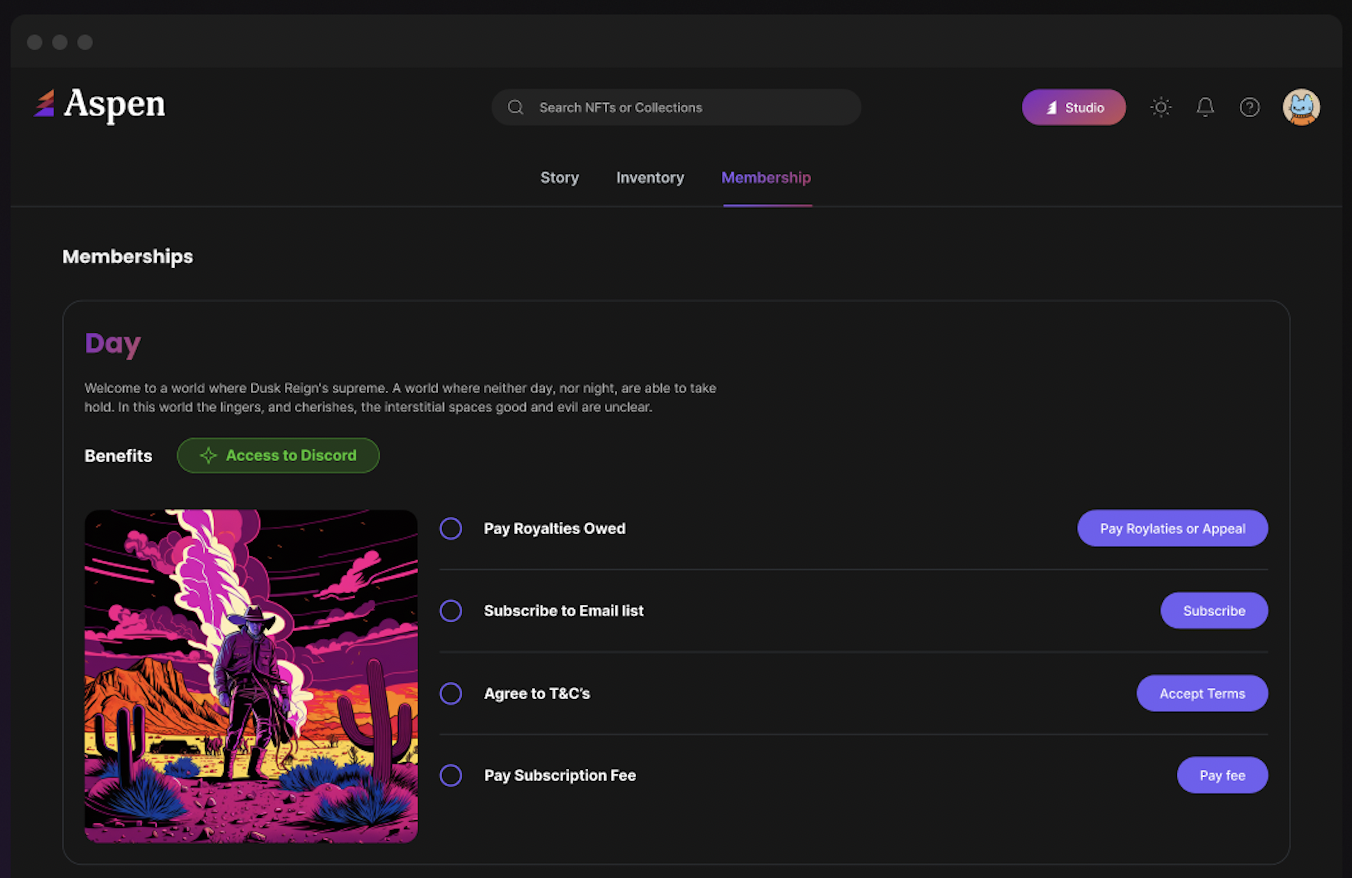Monax Labs, a studio that builds tools to address legal gaps associated with NFTs, has waded into the milieu of companies with solutions to the trend of diminishing NFT creator royalty fees—with a suite of products it says can help creators enforce payments.
Its new membership platform, Aspen, provides project creators a range of tools to manage royalties, minting, subscriptions, and utility access. Aspen is available to the public today after a six-month soft launch period, with tools currently compatible with Ethereum NFTs as well as those on Ethereum scaling networks Polygon and Palm.
Though Monax concedes that it is almost technically impossible to enforce a royalty payment on-chain, these new products aim to give project creators control over who can access added perks and utility tied to NFTs based on whether secondary market buyers paid creator royalty fees.
Aspen 🤝 Royalties
There is a platform where you can give members of your community the ability to easily pay their royalties -- no matter where they collect your NFT?https://t.co/yGDvL2ybjD pic.twitter.com/hiF3pNtzCW— Aspen | Web3 Membership Platform (@aspenft) August 17, 2023
Royalties were once touted as one of the golden eggs in NFT technology, as creators saw the potential for ongoing remuneration from sales of their work. But while these payments—typically a 2.5% to 10% fee on the secondary sale price—were considered a social norm amongst NFT collectors, they could ultimately be circumvented.
Many marketplaces are no longer enforcing royalties. Last month, major marketplace OpenSea made paying creator fees optional—the latest move in what some have called a “race to the bottom” to attract customers. It followed decisions by marketplaces like Blur and Magic Eden over the last year to no longer firmly enforce royalty fees.
The way Aspen tackles this problem is by treating royalties as one of the eligibility requirements to access an NFT’s utility—like a membership program.
It works by giving creators the tools to track those payments, and restrict access to NFT holders who haven’t paid a royalty on a secondary market purchase. But it also lets NFT holders pay up to regain access if they initially skipped paying the royalty fee when buying from a marketplace.
Christina Giannakou, chief creative officer at Monax Labs, likens it to a Spotify or Netflix subscription model, although it puts the onus on the artist or NFT creator to make sure they are providing value in return. Aspen makes money from the tool by charging a commission when creators make money.

“We're able to see [who has paid], and we basically compile a list of people that either paid royalties on another platform—or came on to Aspen and then paid royalties—in order to get access to membership and utility,” said Giannakou.
Monax holds up its work with Consortium Key as one of Aspen’s success stories during the soft launch phase. Consortium Key uses Ethereum NFTs to unlock tools to maximize crypto market trading efficiency—and sets its creator royalty fee at 7.5% of each secondary sale price. The NFTs currently start at a price of 1.5 ETH (about $2,450) on OpenSea.
When the companies started working together, Monax Labs claims that Consortium Key revenue was down 95% due to fading NFT royalty enforcement. Within the first month of implementing the new program, Consortium Key reached its initial revenue goal, more than doubling the amount of subscriptions. Monax said that 90% of Consortium Key’s holders have now paid their set creator royalties, up from 10% as of April.
While Aspen’s model puts the utility first rather than the art, Giannakou argues that this shouldn’t stop artists from thinking about what other ongoing utility they could provide to their holders. Such benefits can give buyers incentive to hold onto their NFTs—or alternatively, for would-be holders to consider buying on the secondary market.
“Any project can create ongoing utility, really,” she said. “Is there something that you can charge a small amount for on an ongoing basis to create revenue? I think that ultimately comes down to the project, the individual artist, and their brand.”
“The creators are the innovators,” Giannakou added, “and I think if the innovators aren't getting paid to innovate, then the whole Web3 ecosystem is in trouble fundamentally.”
 decrypt.co
decrypt.co
